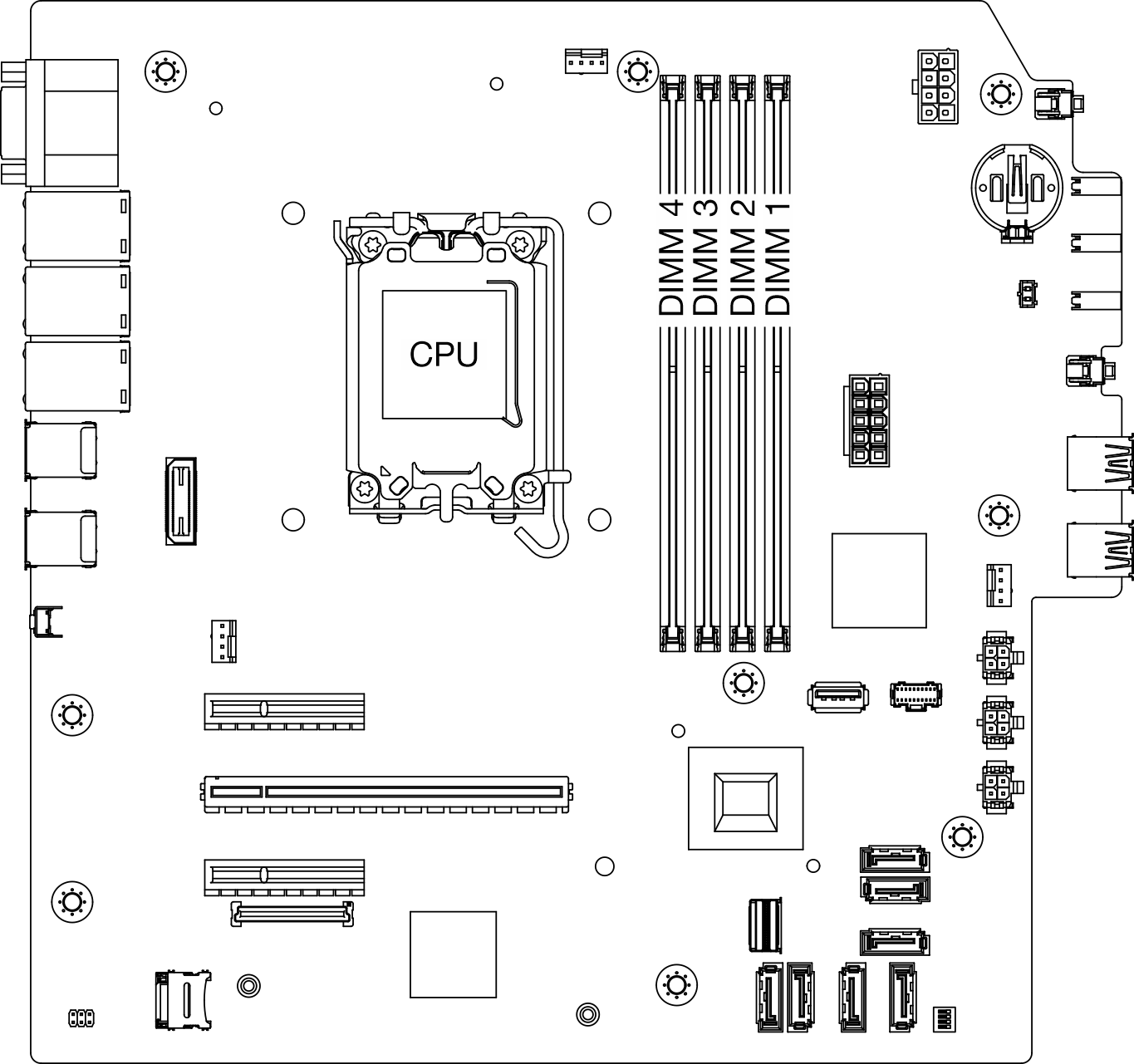Memory module installation rules and order
Memory modules must be installed in a specific order based on the memory configuration that you implement and the number of processors and memory modules installed in the server.
Supported memory types
For information on the types of memory module supported by this server, see Memory section in Technical Specifications.
Information about optimizing memory performance and configuring memory is available at the Lenovo Press website:
In addition, you can take advantage of a memory configurator, which is available at the following site:
Lenovo Enterprise Solutions Configurator (Memory Configurations)
Specific information about the required installation order of memory modules in your server based on the system configuration and memory mode that you are implementing is shown below.
Memory modules and processors layout

| Channel | Channel A | Channel B | ||
| CHA2 | CHA1 | CHB2 | CHB1 | |
| Slot number | 4 | 3 | 2 | 1 |
Supported type of memory modules
- TruDDR5 4800 MHz UDIMM: 16 GB (1Rx8), 32 GB (2Rx8)
- TruDDR5 5600 MHz UDIMM: 16 GB (1Rx8), 32 GB (2Rx8)
Memory mode and installation order
Independent mode
Independent mode provides high performance memory capability. You can populate all channels with no matching requirements. Individual channels can run at different memory module timings, but all channels must run at the same interface frequency.
When single-rank (1R) and dual-rank (2R) memory modules are mixed in the same system, the memory speed is 2000 MHz.
The 4800 MHz memory modules are only supported with Intel Xeon E-2400 series and Pentium processors.
| Total memory module installed | Memory module slot number | Memory speed | |||
|---|---|---|---|---|---|
| 4 | 3 | 2 | 1 | ||
| One | √ |
| |||
| Two | √ | √ | |||
| Three | √ | √ | √ |
| |
| Four | √ | √ | √ | √ | |